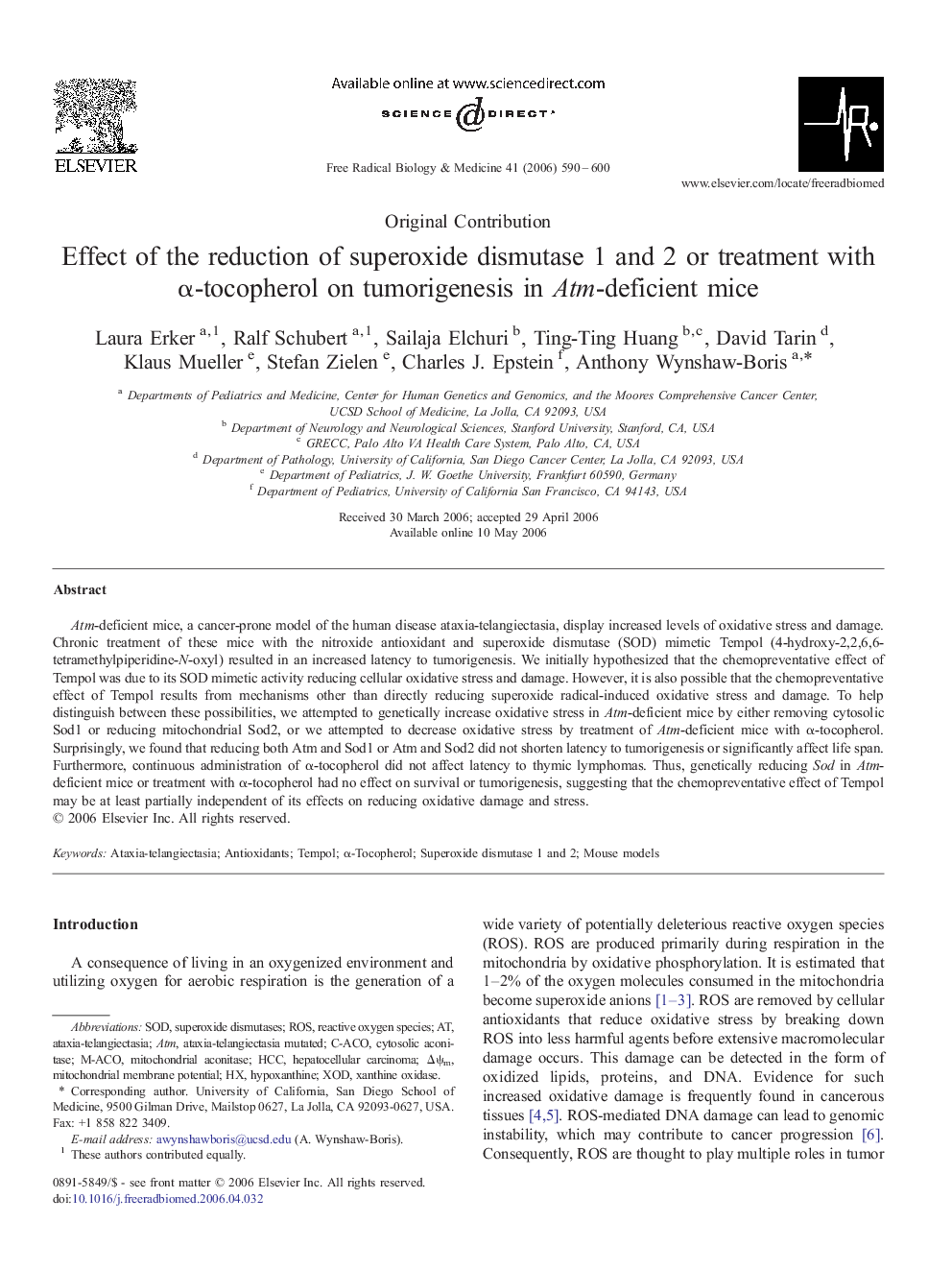| Article ID | Journal | Published Year | Pages | File Type |
|---|---|---|---|---|
| 1911830 | Free Radical Biology and Medicine | 2006 | 11 Pages |
Atm-deficient mice, a cancer-prone model of the human disease ataxia-telangiectasia, display increased levels of oxidative stress and damage. Chronic treatment of these mice with the nitroxide antioxidant and superoxide dismutase (SOD) mimetic Tempol (4-hydroxy-2,2,6,6-tetramethylpiperidine-N-oxyl) resulted in an increased latency to tumorigenesis. We initially hypothesized that the chemopreventative effect of Tempol was due to its SOD mimetic activity reducing cellular oxidative stress and damage. However, it is also possible that the chemopreventative effect of Tempol results from mechanisms other than directly reducing superoxide radical-induced oxidative stress and damage. To help distinguish between these possibilities, we attempted to genetically increase oxidative stress in Atm-deficient mice by either removing cytosolic Sod1 or reducing mitochondrial Sod2, or we attempted to decrease oxidative stress by treatment of Atm-deficient mice with α-tocopherol. Surprisingly, we found that reducing both Atm and Sod1 or Atm and Sod2 did not shorten latency to tumorigenesis or significantly affect life span. Furthermore, continuous administration of α-tocopherol did not affect latency to thymic lymphomas. Thus, genetically reducing Sod in Atm-deficient mice or treatment with α-tocopherol had no effect on survival or tumorigenesis, suggesting that the chemopreventative effect of Tempol may be at least partially independent of its effects on reducing oxidative damage and stress.
